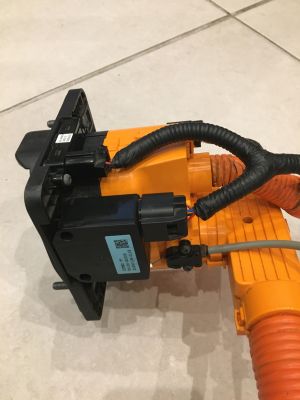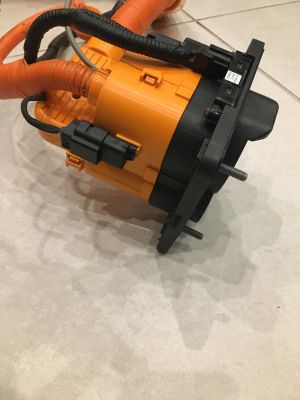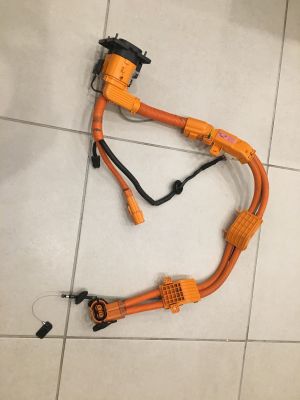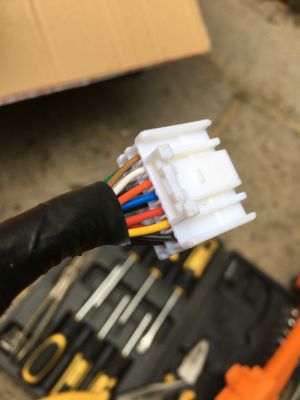Hyundai Ioniq CCS Charge Inlet 91684-G7010: Difference between revisions
No edit summary |
No edit summary |
||
| Line 9: | Line 9: | ||
On the right hand side is a resistor block containing a 2.7K resistor between PE and PP. | On the right hand side is a resistor block containing a 2.7K resistor between PE and PP. | ||
[[File:14 way connector top side.jpg|thumb|Wire side of 14 way connector, top side. Pin 1 top right: brown-black, pin 8 below it: black.]] | |||
There is a 'commoning block' that connects the AC cable shielding, the paired CP/PP cable shielding and PE itself to a common wire into the 14 way connector. | There is a 'commoning block' that connects the AC cable shielding, the paired CP/PP cable shielding and PE itself to a common wire into the 14 way connector. | ||
Revision as of 06:45, 6 June 2024


The Hyundai Ioniq AE CCS Charge Inlet part number 91864-G7010 combines a Type 2 charge port (single phase) with a CCS2 DC inlet. The full part is shown below with approx. 2M of shielded DC cable, a TE AMP+ connector for the Hyundai battery pack, connector to onboard charger and 14-way plug presumably connecting to the car's charge controller. There are plastic 'pass through' mouldings that mount and route the HV DC cables, and a cable release for manually releasing the charge port lock pin.


The charge port inlet has a two part backshell, with DC HV cables exiting via a right angle backshell. These are fairly easily removed but the plastic tabs are weak. The charge port lock actuator screws to the left side of the charge port and a manual wire pull release attaches to it to pull the locking pin back out.
An LED is mounted in the top of the port, above the AC input.
On the right hand side is a resistor block containing a 2.7K resistor between PE and PP.

There is a 'commoning block' that connects the AC cable shielding, the paired CP/PP cable shielding and PE itself to a common wire into the 14 way connector.